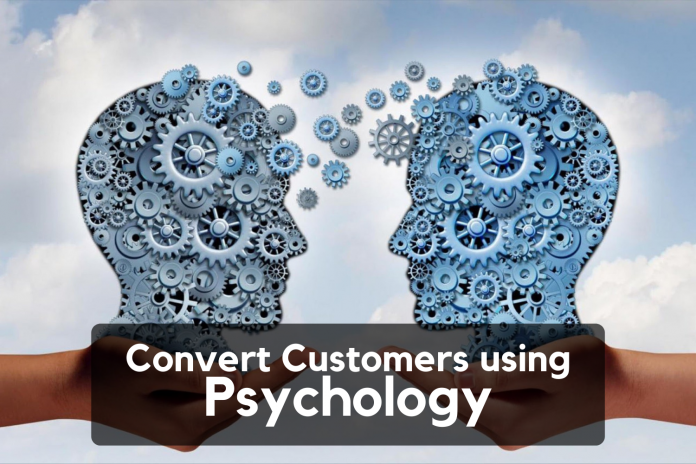Marketing is mainly dependent on cultivating relationships with customers to provide your goods or services in a friendly and appealing manner. Convert customers using psychology is a broad field of study that entails the scientific investigation of the human mind and behaviour. Understanding consumer behaviour and motivations for purchase decisions are crucial to develop a relationship with them effectively.
As a marketer, your objective is to capture your audience’s attention and lead it toward your services by making them more appealing and intriguing than the competition.
Regrettably, various members of the audience will have different perspectives on the same offering. As a result, a marketer must be aware of their opinions, attitudes, and beliefs in their target audience.
They must next create a marketing campaign that keeps them coming back and encourages them to buy from you. So, let’s explore how we can implement psychology in our marketing efforts together with Moosend.
1. Reward Customers
 Top restaurants utilize stamp cards to give guests something for free or at a reduced price if they complete a card with stamps. The procedure works because of a psychological concept known as “operant conditioning.”
Top restaurants utilize stamp cards to give guests something for free or at a reduced price if they complete a card with stamps. The procedure works because of a psychological concept known as “operant conditioning.”
The most popular operant conditioning method rewards a specific behavior for getting more of the same behavior later. On the other hand, customers may become bored with the product given over time or decide they do not want it.
A more efficient strategy to attract clients is to surprise them with a reward when they least expect it. Consider a restaurant that gives away free beverages at random, so no one knows when it will happen.
As a result, individuals will return to the restaurant more frequently to increase their chances of receiving a free drink.
2. Appeal to the Senses
 Appreciating a product or service in person is the most efficient way to persuade clients to buy. When marketing your products or services, use pictures.
Appreciating a product or service in person is the most efficient way to persuade clients to buy. When marketing your products or services, use pictures.
Make sure your presentation is vibrant and visually appealing, whether it’s an introductory brochure or flyer, emails, your website, blog, or social media.
Sound is equally crucial. When you see a television commercial, the jingles and noises assist you in remembering the brand by cementing the information in your mind.
Humans remember information that appears to be more relevant or vital to them. Sounds tend to stick in people’s thoughts and form a connection with your brand.
3. Capture their Attention with your Website
 As quickly as possible, you must catch and guide the attention of your potential customers via your website and website design. Make sure you have your audience’s attention whether you’re writing a blog and require them to pay attention to an image, video, link, or call to action.
As quickly as possible, you must catch and guide the attention of your potential customers via your website and website design. Make sure you have your audience’s attention whether you’re writing a blog and require them to pay attention to an image, video, link, or call to action.
Make your products or services stand out as much as possible by mentioning them frequently. Your website has a fraction of the time to grab the attention of visitors. Viewers will abandon a page if it becomes busy or difficult to access information.
No one on your website should mistakenly scroll past what you want them to focus on in today’s world of information. Always keep in mind that your audience a minimal attention span. Take the time and engage with your audience right away to get their full attention.
4. Price Anchoring
 This is also a perfect moment to apply a method known as “anchoring.” When you start a discussion about the price of anything by setting a very high price, you establish an “anchor” in your customer’s mind as a foundation. When you offer to sell at a lesser price later, they’ll recall the previous price and think the lower price is a fantastic deal.
This is also a perfect moment to apply a method known as “anchoring.” When you start a discussion about the price of anything by setting a very high price, you establish an “anchor” in your customer’s mind as a foundation. When you offer to sell at a lesser price later, they’ll recall the previous price and think the lower price is a fantastic deal.
When you’re dealing with an educated buyer who already knows the price of comparable products, though, anchoring might be an issue.
Starting with a relatively high price is, in most situations, only a suggestion. Anchoring frequently necessitates good evidence and the use of your judgment to determine the best course of action.
5. Offer a Lead Magnet for Free
 Lead magnets, such as a free eBook, webinar, or downloadable checklist, are typical methods of providing value to your audience.
Lead magnets, such as a free eBook, webinar, or downloadable checklist, are typical methods of providing value to your audience.
Why do so many marketers give out free stuff? Because it is profitable. When someone downloads one of these materials and you provide them with genuine value, they will be thrilled to do business with you when you ask.
After all, you’ve already helped them, so the very least they can do is assist you – or so the thinking goes.
Here are a few different sorts of lead magnets you can make to leverage this psychology tactic.
- Ebook – It does not have to be nearly as long as a traditional book. Aim for at least 5,000 or 10,000 words. Just make sure you’re adding a lot of value.
- Webinar – One of the most common mistakes people make when hosting a webinar is not delivering enough genuine value to their audience. Begin by offering value, and then pitch your product at the conclusion.
- Podcast – Focus on delivering value to your audience when creating a podcast. Help them in making a connection with you and learning to trust you. They’ll most likely buy from you later.
6. Social Proof
 Naturally, there are numerous ways to apply social proof to increase the conversion rate of your website.
Naturally, there are numerous ways to apply social proof to increase the conversion rate of your website.
When it comes to persuading people (online or offline), building trust is crucial, and providing a sense of security boosts conversions. If you are a beginner, this conversion rate guide can help you with the process.
Testimonials and credibility bars both employ the psychological principle of social proof to persuade customers to buy by demonstrating that others have done so and been satisfied.
But how else can you use social proof to boost your website’s conversion rate?
A few ideas.
- Use someone-just-bought notifications – You want to go where everyone else is going when choosing a restaurant. If everyone else is going, it must be fantastic, right? For online sales, these social proof notifications accomplish the same effect.
- On the landing page, feature one of your target market’s influencers — One of the simplest ways to gain trust from your target market is to use influencers. Pay them to promote your product and use their photo instead of the hero image on your landing page.
- Customer Testimonials – Use video reviews from a satisfied customer to boost conversions.
- Case study – Create a blog post or a video highlighting the success of your product by interviewing some of your best customers. This can help potential clients see how you can assist them in the same way.
7. Fear Of Missing Out (FOMO)
 People want what they can’t have and are terrified of missing out on good opportunities.
People want what they can’t have and are terrified of missing out on good opportunities.
This Fear Of Missing Out trend is so common that dictionary.com has officially defined FOMO as “Anxiety that an exciting or interesting process may currently be taking place elsewhere, frequently triggered by posts viewed on social media.”
What is the significance of this for your website’s conversion rate?
People are significantly more likely to reach into their wallets when they are worried about losing out on a good deal.
But, when it comes to increasing your website’s conversion rate, how can you use FOMO to your advantage?
Here are a couple of suggestions
- Make use of a countdown timer for sales.
- Show how many products are remaining in stock.
- Free shipping is only available for the first “X number of products” purchased.
8. Commitment and Consistency
 Whether people arrive at your site via organic search, social media, or paid advertising, each route offers a different tale. Unfortunately, few websites use a psychological principle known as “consistency and commitment” to capitalize on that story.
Whether people arrive at your site via organic search, social media, or paid advertising, each route offers a different tale. Unfortunately, few websites use a psychological principle known as “consistency and commitment” to capitalize on that story.
Rather than treating all visitors the same, you might pivot your strategy on determining client intent based on their traffic source. The best path is to deliver bespoke material so that visitors’ first impression is consistent with their origin.
To put it another way, people desire to stick to their previous decisions. So, if you help them make a small commitment to you now, they’re far more likely to make a significant commitment to you later.
Here are a few examples of how you may use this to benefit your website and its visitors
- Give away a free book but need the recipient to pay for shipping – This achieves the appropriate balance between your generosity and the prospect’s commitment. They’ll be more likely to buy bigger-ticket products from you in a few months if they pay for shipping.
- Ask for the visitor’s email address – Nowadays, people take great pains to keep their email inboxes free of spam. If you can get a prospect to give you their email address, that tiny commitment may be enough to come back and buy from you later.
- During the checkout process, have multiple small-step forms — Starting the buyer’s checkout process with simply an email address and a name is an excellent way to go. After that, have them enter their address. Then there’s the delivery method. Send them to the payment information page at the conclusion. The goal is to encourage potential buyers to make tiny commitments before purchasing so that they are more likely to complete their purchases.
The Takeaway
You must compel a potential customer to work for you if you want them to remember your products or services. The more they consider your items or services, the more they will remember them.
Make your marketing campaign interactive by include tasks or quizzes. Ask rhetorical questions about what your products or services can achieve for them on your website so that they are actively thinking about them. The more information from your sales pitch they process in-depth, the more likely they are to purchase.
Effective use of psychology is essential for successful marketing. You will have a competitive advantage in selling your products or services and be more successful at marketing than ever before if you incorporate the numerous techniques outlined above into your company’s marketing strategy.
































